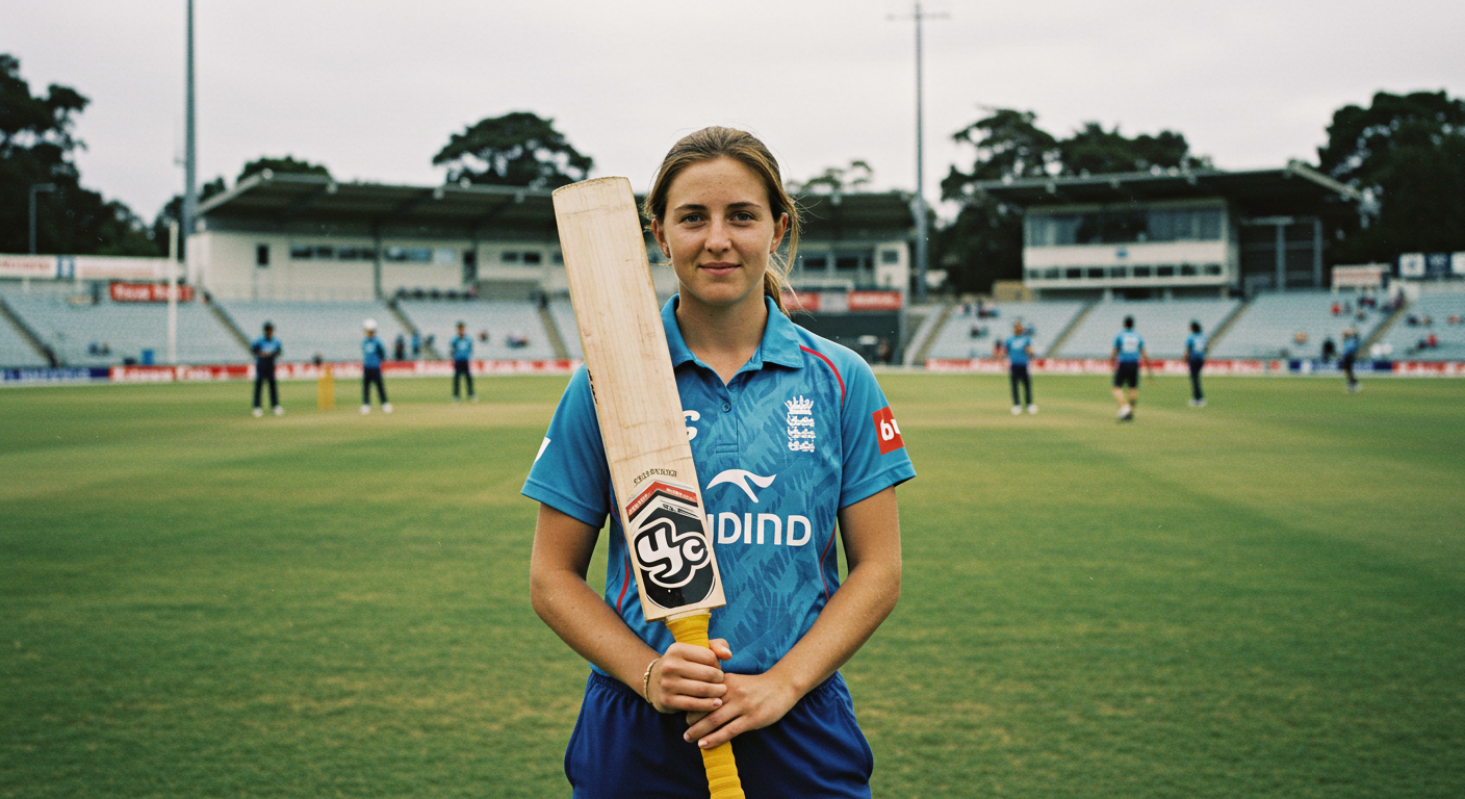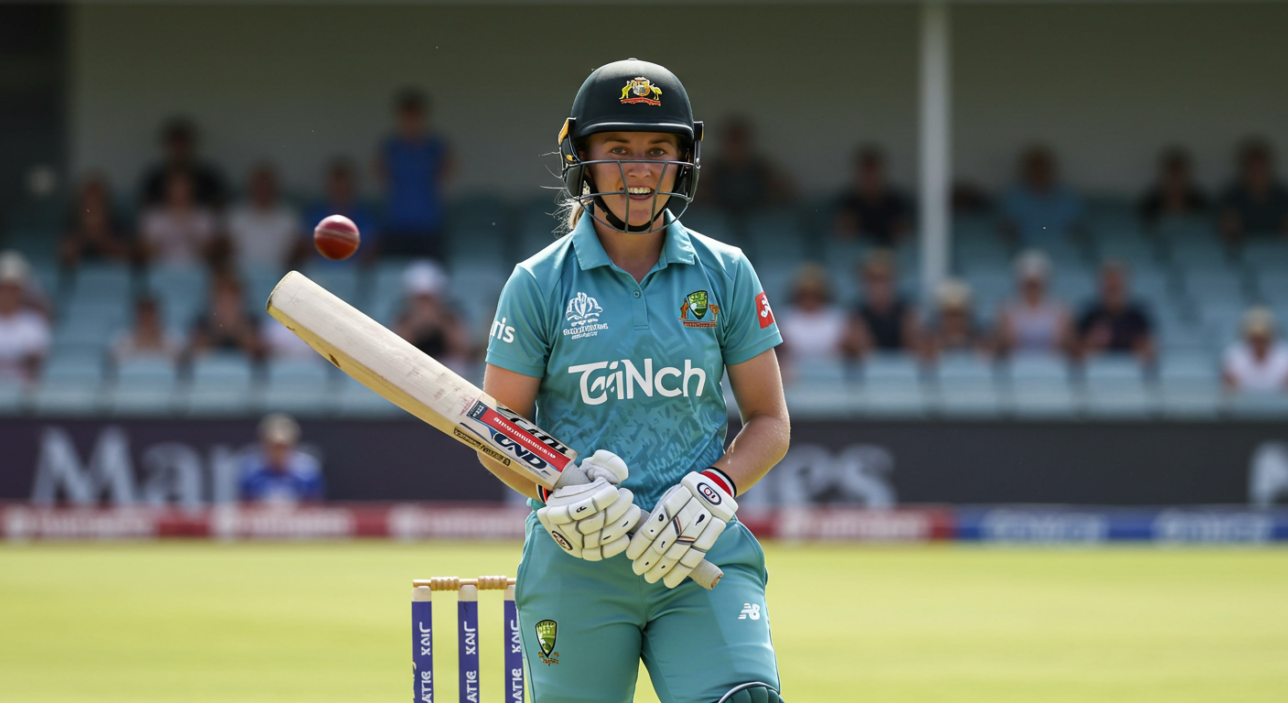
Nat Sciver-Brunt: Quiet Consistency, Big Impact
Nat Sciver-Brunt doesn’t shout. She doesn’t posture. She doesn’t chase headlines. Yet for more than a decade, she’s been at the centre of every major moment in England women’s cricket—sometimes literally, sometimes invisibly. Her contributions don’t leap off the screen at first glance, but dig into any English victory of consequence and you’ll find her there: holding a chase together, breaking a partnership, covering a gap in the field no one else noticed. She’s not peripheral. She’s integral. Just rarely advertised as such.
In a side that has experimented with aggression and showmanship, with new combinations and bold selections, Sciver-Brunt has stayed vital by doing what few others have managed—delivering without disrupting. Her impact isn’t just statistical, though the numbers are strong. It’s strategic. Structural. She’s the oil in the machinery of a team often praised for its flair but dependent, more often than it admits, on her steel.
This isn’t the story of a player who reinvented the game. It’s about someone who made herself indispensable to it, almost without anyone noticing she’d done so. There are louder players. But few are more valuable.
A Career Without an Entry Point

Most elite careers have a narrative moment you can point to. The early hundred. The blistering spell. The debut that turned heads. Nat Sciver-Brunt didn’t enter that way. She arrived not as a prodigy, but as a presence—a player who seemed useful from day one, and within a few seasons, had quietly made herself irreplaceable.
Born in Tokyo, raised in the Netherlands and the UK, Sciver-Brunt had the kind of sporting childhood that makes multi-sport athletes seem inevitable. She played football, hockey, and basketball. Cricket came later, but it stuck. Not because it offered the brightest spotlight, but because she could see the shape of her game inside it—multi-dimensional, situational, rarely dramatic but always decisive.
Her early England years were unremarkable on the surface. Useful with the bat, handy with the ball. You could have mistaken her for a squad player—until, suddenly, you couldn’t imagine the XI without her. That shift didn’t come with a breakout series, but with a string of mid-innings rebuilds and pressure overs that turned matches in England’s favour without demanding praise.
Her 2017 World Cup campaign was, in many ways, a reflection of how she plays. She didn’t top-score or take a five-for in the final. But in the earlier rounds, she was England’s metronome. She scored 369 runs across the tournament—more than anyone else in the squad—and bowled with economy and clarity. Her half-century against Pakistan was clean and composed. Her 90 against Australia in the group stage was clinical. She didn’t celebrate big. She rarely does. But by the end of the tournament, she’d been one of the most influential players of the campaign.
There’s no mythmaking around Sciver-Brunt. No glittering origin story. And yet, at some point, England became unbalanced without her. That’s the kind of impact most players don’t get written about—because it doesn’t look like impact, until they’re gone.
The Middle Order’s Centre of Gravity
If the top order builds the idea of an innings, it’s often the middle that makes it real—or salvages it. Nat Sciver-Brunt has become England’s most reliable interpreter of those moments when plans fall apart or need recalibrating mid-match. Her batting is rarely loud. It’s rarely slow either. It moves at the tempo the match needs, not the one the scoreboard suggests. She reads rhythm rather than chasing it. And it’s that capacity for matching the moment—not outpacing it—that makes her England’s most tactically essential batter.
She’s not conventionally elegant. There’s a looseness to her stance, a slightly hunched, utilitarian readiness that suggests function over flair. But her shot selection is refined, particularly against spin, where she uses late cuts and soft hands as often as brute force. Against pace, she waits. Drives. Pulls when necessary. Rarely flashy. Always deliberate.
Her innings are built in layers—10 off 15 becomes 40 off 45 becomes 70 off 60—not through any obvious acceleration, but through positioning, timing, and a refusal to play anything she doesn’t need to. She trusts her process and makes very few false choices. Her hundreds against Pakistan in 2022 and Australia in 2023 weren’t explosive—they were clinical. And more to the point, they were necessary.
She isn’t just there for the crises either. When England dominate, Sciver-Brunt becomes the quiet engine, turning 200 into 280, 130 into 210. She doesn’t push the run rate as much as she ensures it never stalls. That kind of control—of tempo, of innings narrative—is harder to spot than a six over cover. But it’s infinitely more valuable over the course of a tournament.
Bowling Without Noise, Still With Purpose

For most of her career, Sciver-Brunt has been described as a batting all-rounder, but that label misses something about the intent behind her bowling. She may not take a high volume of wickets or bowl with express pace, but her role is rarely ceremonial. Her overs are chosen—carefully. They’re the ones that need to be quiet. Or the ones that need to interrupt rhythm.
She’s often used as the change-up—breaking a partnership with a ball that holds its line, or rolling through a pressure over when a batter is just beginning to look comfortable. She bowls at awkward angles, sometimes cross-seamed, often just back of a length, and always with purpose. Her wicket of Beth Mooney in the 2022 Commonwealth Games final—a delivery that nipped in late and caught her on the crease—was a reminder that she still offers moments of genuine disruption.
But it’s the containment role that defines her bowling value. She doesn’t leak. She doesn’t panic. And when fielding restrictions are tight and options are slim, she offers an over or two that rarely leave scars.
As England’s bowling attack has rotated—particularly in T20s—Sciver-Brunt’s spells have become less about headline moments and more about enabling others. She holds one end. She buys time. She slows the chase. It’s work that doesn’t get crowd applause. But it’s the reason others can bowl to attacking fields without fear.
Leadership When It Matters, Not Just When It’s Asked
Nat Sciver-Brunt isn’t England’s full-time captain. But she has, on more than one occasion, been its centre of emotional gravity. When Heather Knight was injured in 2022, Sciver stepped into the leadership role—not as a dramatic voice or a new tactician, but as a player whose example already guided the group. She didn’t bring a new philosophy. She stabilised the one already in motion.
Her leadership is instinctive rather than structured. She doesn’t radiate control; she diffuses panic. Her team talks aren’t fire and fury—they’re reminders. Of plans, of skills, of the hours spent preparing. Her style isn’t about commanding space—it’s about sharing it. That matters in a side with strong personalities, rising stars, and the increasing weight of expectation.
Her captaincy stint during the Commonwealth Games in Birmingham wasn’t without its challenges. She led a side in transition, against increasingly strong opposition, on a global stage that treated women’s cricket as primetime sport. England fell just short, losing to India in the semi-final and to New Zealand in the bronze medal match. The result was disappointing. Her composure wasn’t.
What emerged wasn’t a new permanent captain. It was a confirmation: Sciver-Brunt leads even when she isn’t given the title. Whether she’s first slip or non-striker, whether the cameras are on her or not, teammates follow her body language. She absorbs chaos. She never outsources responsibility.
The Weight of Expectation, Managed Quietly

Consistency in high-performance sport is often presented as a gift. But for players like Sciver-Brunt, it can become a trap. She performs so often, so calmly, that any dip—any missed opportunity or quiet match—feels exaggerated. Others are allowed poor form. She’s expected to recover before it’s noticed.
Through injuries, team reshuffles, and the pressures of international calendars, Sciver-Brunt has maintained a rare equilibrium. She doesn’t offer soundbites about workload or the mental strain of elite cricket. But in 2022, when she opted to take a brief mental health break, she reminded everyone that her calmness isn’t limitless—and more importantly, that it never was meant to be.
She returned quickly, on her own terms, with little fuss. There were no long interviews or press tours. No dramatic statements. Just a quiet re-entry into the squad. A half-century here, a controlled spell there. And with that, a sense that normalcy had returned—not just to her, but to the team.
What’s remarkable isn’t just that she came back. It’s how the team responded to her presence. There was a subtle shift. Fielding looked tighter. Plans clicked. The dressing room tone softened. It’s not the kind of influence you measure in match fees or batting averages. But it’s the kind you build a dressing room around.
In a generation where profiles rise fast and burn out quicker, Sciver-Brunt offers something more sustainable: presence without ego, success without performance theatre.
Legacy in Layers, Not Headlines
Nat Sciver-Brunt’s career doesn’t lend itself to a single definitive image. There’s no one moment that captures her entirely. And that’s the point. Her legacy is layered—built from a series of performances that rarely chase spotlight but often shape results. If some players define their era by revolutionising a format or breaking a record, Sciver-Brunt defines hers by ensuring the space around her functions at its best.
What she has done, quietly and persistently, is reframe what impact looks like in a team setting. She’s a multi-format anchor, an all-rounder who never drifts into generalism, and a player whose greatest strength is her adaptability—not because she lacks identity, but because she’s mastered the art of serving the situation.
You don’t often hear her talked about in hyperbole. But when captains need calm, or line-ups need stability, or chases begin to wobble, she’s the one teams turn to. Not because she always saves the day, but because she very rarely lets it get worse.
Off the field, she continues to be a modern figure without being a brand. She’s spoken about mental health without turning it into a campaign. She’s navigated the growth of franchise cricket and rising visibility in women’s sport without compromising what makes her effective: a focus so consistent it rarely bends to attention.
Nat Sciver-Brunt: The Power of Subtle Impact

Nat Sciver-Brunt may never have the documentary arc. Her story doesn’t demand a final scene scored with dramatic music. But in a sport increasingly shaped by individual stardom and moment-based performance, she remains one of the most quietly radical cricketers of her generation.
Because she proves, over and over again, that steadiness is not the absence of drama—it is a form of skill. That adaptability isn’t a lack of identity—it’s a high-functioning form of leadership. And that delivering consistently, across formats, roles, and circumstances, requires more discipline than almost any other trait in elite sport.
She is the kind of cricketer whose value becomes most obvious in her absence. The kind who makes teams function better simply by being in them. The kind whose innings don’t always trend but often turn the match. And the kind whose influence is rarely described as revolutionary—until you realise how many others have quietly started playing the game her way.
In a world that rewards the loudest version of success, Sciver-Brunt’s legacy may take longer to be fully appreciated. But when it is, it will feel inevitable—just like her contributions always do.





